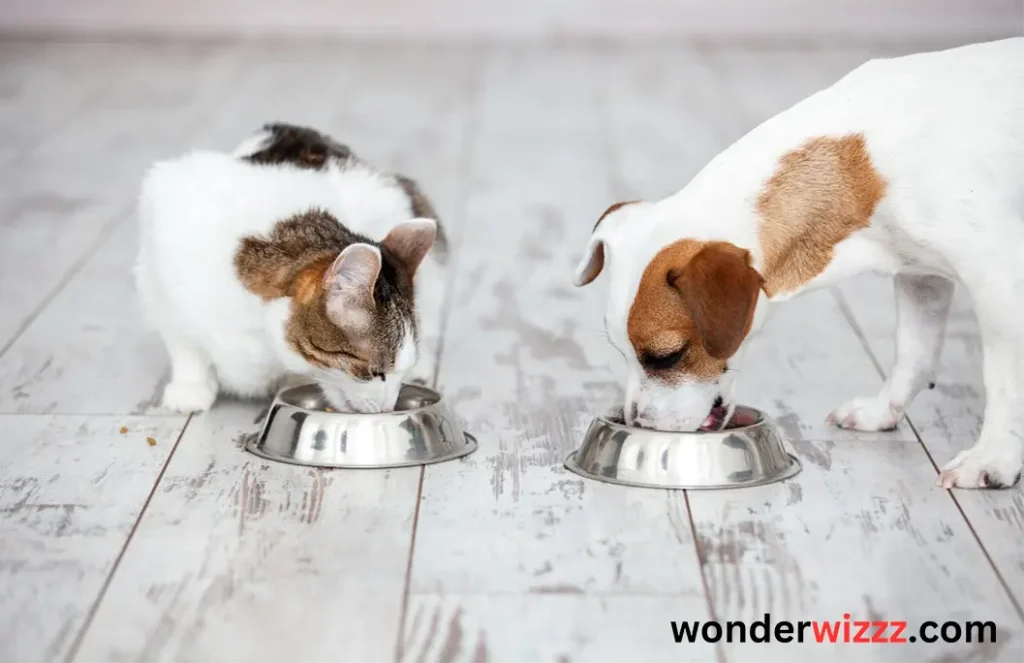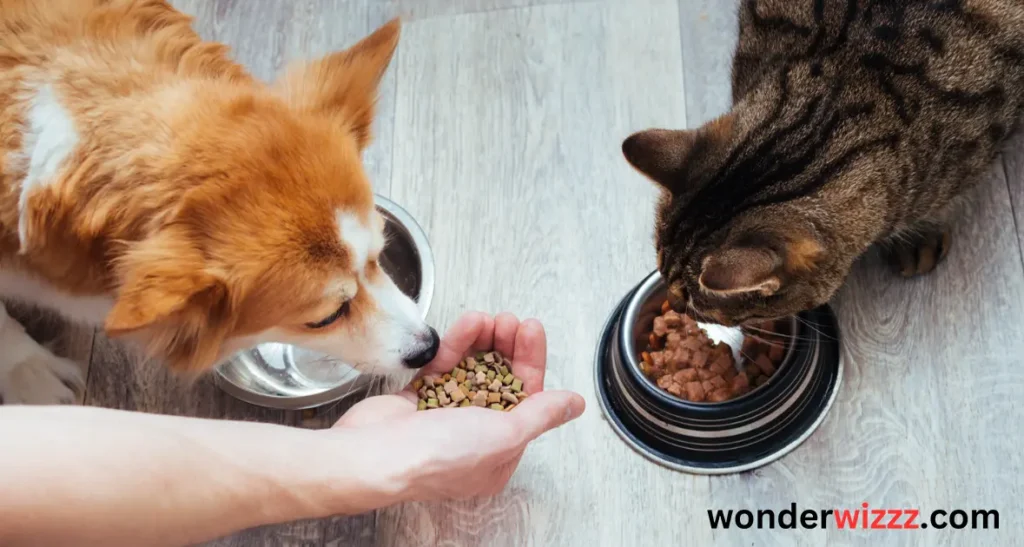What’s the Best Diet for Your Pet’s Health?

Introduction
Pets, like humans, need a good diet to stay healthy. The food they eat affects their energy levels, coat condition, and overall well-being. There are many types of diets for pets, ranging from commercial pet foods to homemade meals. Figuring out the best diet for your pet can be tricky, as it involves considering various factors such as their age, breed, and any health conditions they may have.
A. Explanation of the importance of diet in pet health
The food your pet eats is like fuel for a car—it gives them the energy they need to run around, play, and stay healthy. Just like humans, pets need a balanced diet to get all the nutrients their bodies require.
B. Brief overview of the variety of pet diets available
When it comes to feeding your pet, you have plenty of options. There are commercial pet foods available in different forms like kibble, canned, and raw. Some pet owners prefer making homemade meals for their furry friends, while others follow specific dietary plans like grain-free or hypoallergenic diets.
C. Thesis statement: The quest for the optimal diet for pet health involves considering various factors.
Finding the perfect diet for your pet isn’t a one-size-fits-all solution. It requires careful consideration of factors like your pet’s age, breed, activity level, and any health issues they might have. By understanding these factors, you can choose the best diet to keep your pet happy and healthy for years to come.

Understanding Pet Nutritional Needs
To keep your pet healthy, it’s essential to understand what they need in their diet.
A. Basics of pet nutrition
- Macronutrients: These are the big things pets need in their food. Like humans, they require proteins for muscles, fats for energy, and carbohydrates for fuel.
- Micronutrients: These are the smaller things pets need. They include vitamins for various bodily functions and minerals like calcium for strong bones.
B. Variations in nutritional requirements based on species, breed, age, and health condition
Different pets have different needs. A big dog might need more food than a small one, and a puppy needs different nutrients than an older dog. Even pets of the same breed can have different needs depending on their health.
C. Importance of consulting a veterinarian for personalized dietary recommendations
Your vet is like a pet health expert. They know your pet’s medical history and can give personalized advice on what food is best for them. They can also help if your pet has special dietary needs due to health issues.

Common Pet Diet Options
When it comes to feeding your pet, there are a few main options to consider.
A. Commercial pet foods
- Types: Commercial pet foods come in different forms, such as dry kibble, canned wet food, and semi-moist. These are convenient options readily available in stores.
- Pros and cons of commercial diets: Commercial pet foods are convenient and usually balanced with all the necessary nutrients. However, some may contain fillers or additives that aren’t the healthiest for your pet.
B. Homemade diets
- Benefits and risks of homemade pet food: Making food at home for your pet allows you to control the ingredients and quality. However, it can be challenging to ensure they get all the necessary nutrients, and mistakes can lead to imbalances.
- Considerations for balanced homemade diets: To create a balanced homemade diet, it’s essential to research proper pet nutrition and consult with a vet. You’ll need to include a variety of ingredients to cover all their nutritional needs.
C. Raw diets
- Advocates’ claims and controversies surrounding raw feeding: Some pet owners believe raw diets mimic what animals would eat in the wild and promote better health. However, there are debates among experts about the safety and effectiveness of raw feeding.
- Potential health risks and benefits: While raw diets may offer benefits like shinier coats and improved digestion for some pets, they can also pose risks of bacterial contamination and nutritional imbalances if not properly prepared.

Special Dietary Considerations
Pets, just like people, may have special needs when it comes to their diet.
A. Allergies and food sensitivities
- Identifying common allergens in pet food: Some pets may be allergic or sensitive to certain ingredients like grains, beef, chicken, or dairy. Identifying these triggers can help manage their symptoms.
- Strategies for managing food allergies in pets: If your pet has allergies, you can try switching to hypoallergenic foods or eliminating suspected allergens from their diet. Your vet can guide you in finding the best approach.
B. Weight management
- The prevalence of pet obesity and its health implications: Just like humans, many pets struggle with obesity, which can lead to various health problems like diabetes and joint issues.
- Tips for achieving and maintaining a healthy weight through diet: To help your pet maintain a healthy weight, you can feed them portion-controlled meals, limit treats, and incorporate more exercise into their routine.
C. Medical conditions and therapeutic diets
- Prescription diets for pets with specific health issues: Some pets may require special diets to manage medical conditions like kidney disease, diabetes, or urinary issues. These prescription diets are specially formulated to support their health needs.
- Collaboration between veterinarians and pet owners in managing medical diets: Your vet will work closely with you to create a diet plan tailored to your pet’s medical needs. They may recommend specific foods or supplements to help manage their condition effectively.

Evaluating Pet Food Labels
Understanding what’s written on pet food labels is crucial to making informed choices for your furry friend’s diet.
A. Understanding pet food labels and ingredient lists
- Definitions of key terms: Terms like “complete and balanced” mean the food has all the nutrients your pet needs. “By-products” are parts of animals not typically eaten by humans, like organs or bones.
- The significance of ingredient quality and sourcing: Where ingredients come from matters. High-quality ingredients mean better nutrition for your pet. Look for labels that specify the source of ingredients.
B. How to interpret nutritional adequacy statements and guaranteed analyses
Nutritional adequacy statements tell you if the food is suitable for your pet’s life stage, like “for puppies” or “for adult dogs.” Guaranteed analyses show the minimum and maximum levels of certain nutrients in the food.
C. Red flags to watch for when selecting pet foods
Keep an eye out for things like artificial colors, flavors, and preservatives. These additives may not be good for your pet’s health. Also, be cautious if a food has a lot of fillers like corn or soy, as they might not provide much nutritional value.
Lifestyle Factors Impacting Diet Choices
Your lifestyle and preferences play a big role in deciding what to feed your pet.
A. Pet owner preferences and beliefs about nutrition
Your beliefs about what’s healthy for your pet can influence your food choices. Some owners prefer natural or organic foods, while others may prioritize convenience over ingredients.
B. Budgetary constraints and affordability of different diets
Your budget affects what kind of food you can buy for your pet. Premium or specialty diets may be more expensive, while generic brands might fit better within your budget.
C. Convenience and practicality considerations in feeding routines
Your daily routine affects how you feed your pet. If you’re busy or travel frequently, you might opt for ready-to-eat commercial pet foods. On the other hand, if you have more time, you might prefer making homemade meals for your pet.
Conclusion
Choosing the right diet for your pet is super important for their health and happiness.
A. Recap of the importance of choosing the right diet for pet health
Just like how eating well keeps you healthy, the same goes for your furry friend. A good diet helps them stay active, keep their coat shiny, and avoid health problems.
B. Emphasis on the need for individualized dietary plans based on pet-specific factors
Each pet has its own needs, so what suits one may not suit another. Considering things like their age, breed, and any health issues they have can help tailor their diet to their needs.
C. Encouragement for pet owners to seek guidance from veterinary professionals for tailored nutritional advice
Your vet is like your pet’s nutrition expert. They can help you figure out the best diet plan for your furry friend’s specific needs. Don’t hesitate to ask them for advice and guidance.
People also ask
What’s the optimal diet for my pet?
Choose a balanced diet with quality ingredients suitable for your pet’s age and health.
How can I improve my pet’s health?
Regular exercise, veterinary check-ups, and a balanced diet can improve your pet’s health.
What are the 3 types of pet food diets?
Three types are commercial pet foods, homemade diets, and raw diets.
What diet is best for my dog?
Consult your vet to determine the best diet based on your dog’s specific needs.
How do I put my pet on a diet?
Reduce portion sizes, limit treats, and monitor calorie intake under vet guidance.
What food can pets not eat?
Avoid foods like chocolate, grapes, onions, and garlic, which can be toxic to pets.



